Any form of energy that is produced using renewable resources, such as sunlight, wind, or water, is referred to as green energy. It frequently comes from renewable energy sources, but there are some distinctions between renewable and green energy, which we will discuss below.
The crucial aspect of these energy sources is that they do not damage the environment in ways like the atmospheric release of greenhouse gases.
Green energy is a type of energy that frequently derives from renewable energy sources like solar, wind, geothermal, biomass, and hydroelectricity. Each of these technologies functions differently, whether it be by harnessing solar energy, as with solar panels, or by generating energy through the wind or water flow.
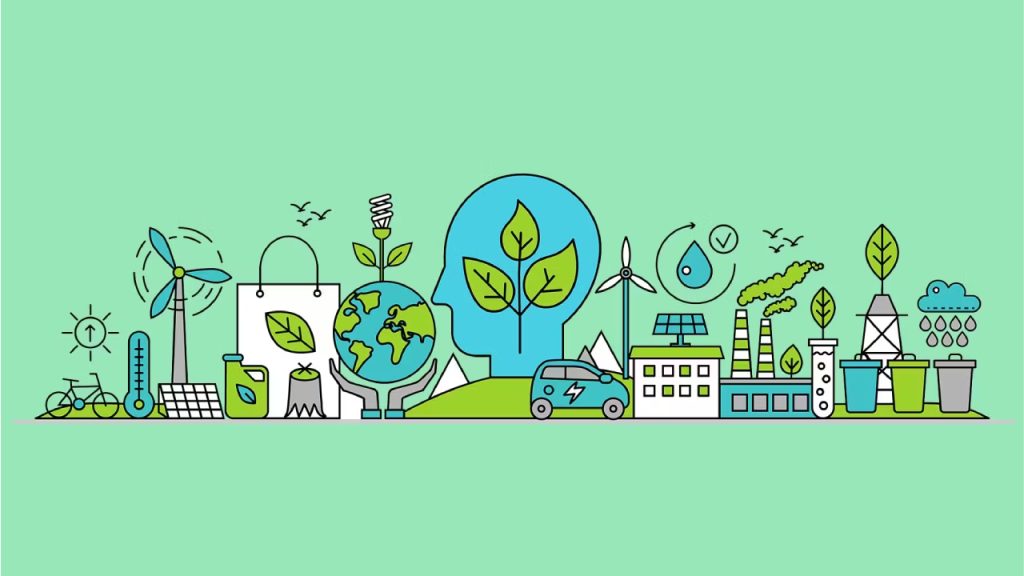
A resource cannot be considered green energy if it produces pollution, as is the case with fossil fuels. This implies that not all of the sources used by the renewable energy sector are environmentally friendly. For instance, while burning organic material derived from sustainably managed forests may be renewable, the CO2 emissions from the burning process make it less likely that the power generated is environmentally friendly.
Green energy sources are usually naturally replenished, as opposed to fossil fuel sources like natural gas or coal, which can take millions of years to develop. Environmentally harmful mining and drilling operations are frequently avoided by green sources.
Types of green energy
The three primary sources are wind energy, solar energy, and tidal energy (which harnesses ocean energy from tides in the sea). Solar and wind energy can be generated on a small scale at individual homes or, alternatively, on a larger, industrial scale.
The following are the six most common types:
Solar Power
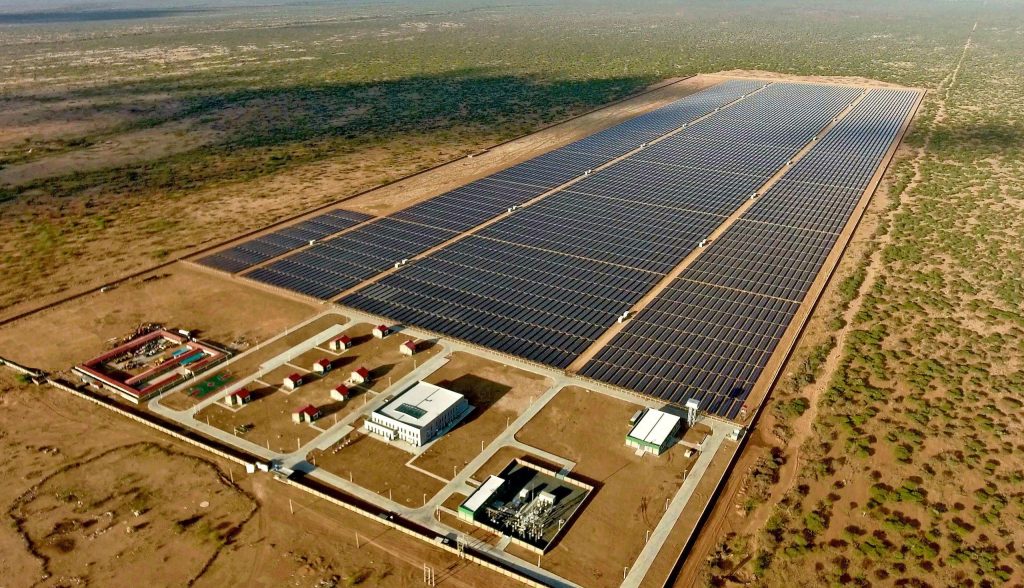
This type of renewable energy is usually generated by photovoltaic cells, which capture sunlight and convert it into electricity. Along with lighting and cooking, solar energy is also used to heat buildings and provide hot water. Solar power has now become affordable enough to be used for domestic purposes, including garden lighting, although it is also used on a larger scale to power entire neighborhoods.
Wind Power
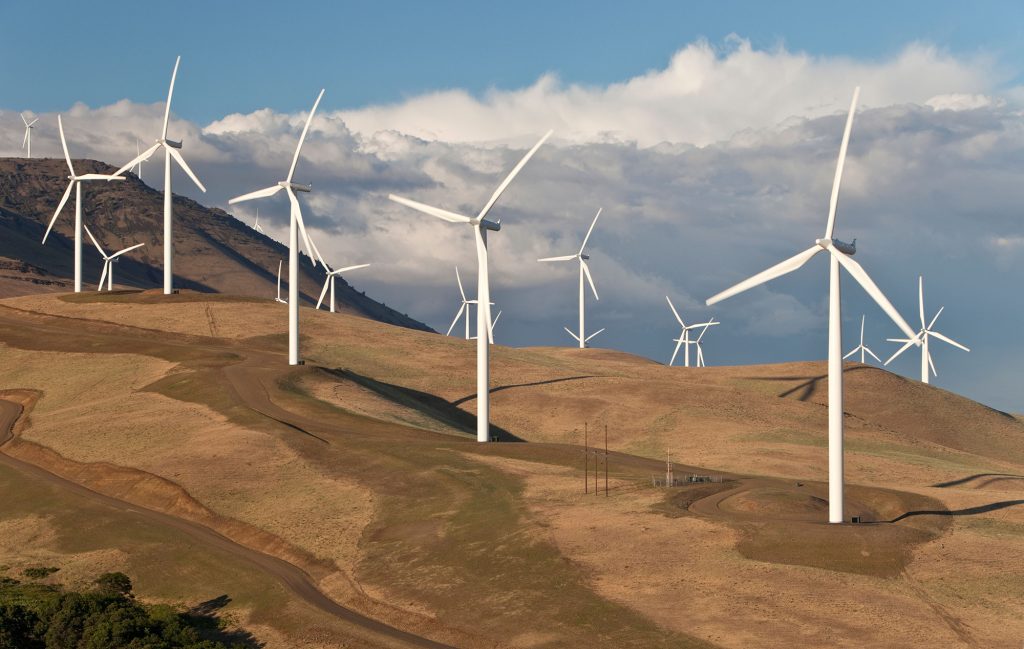
Wind energy makes use of the force of the airflow around the world to propel turbines that then produce electricity. It is particularly suited to offshore and higher altitude sites.
Hydropower
This form of renewable energy, often known as hydroelectric power, generates electricity using the movement of water in rivers, streams, dams, or other locations. Even on a small scale, hydropower can be generated by the movement of water through household pipes, evaporation, rainfall, or ocean tides.
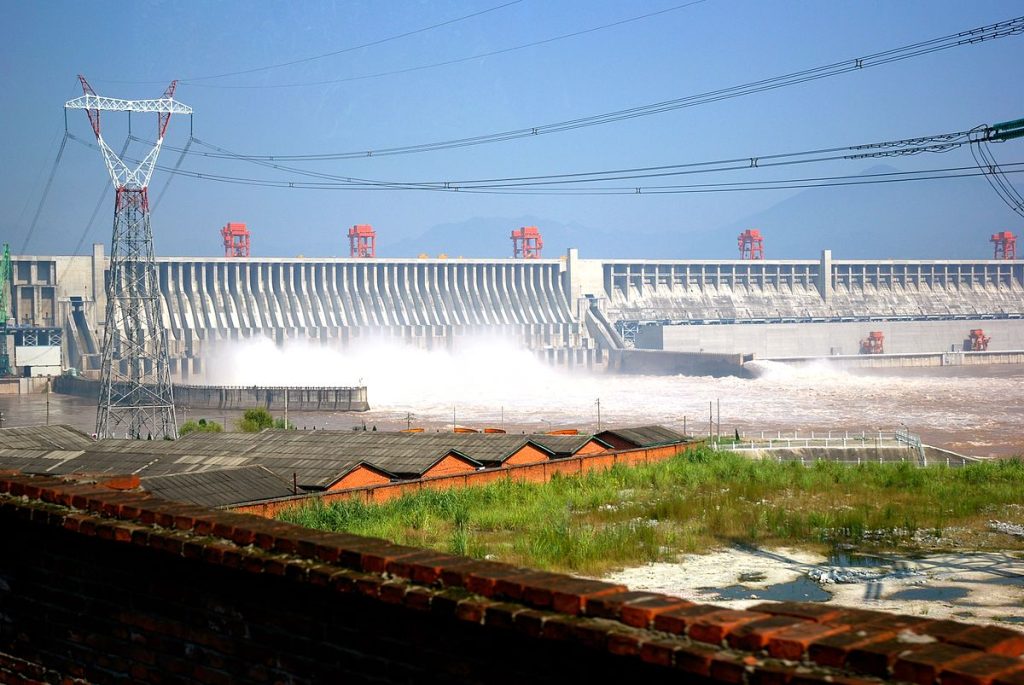
These are the three forms of green energy that vary in terms of how “green” they are depending on how they are made.
Geothermal Energy
The thermal energy that has been kept underground in the earth’s crust is used to generate this kind of green energy. Even though this resource takes drilling to acquire, raising concerns about its effect on the environment, it is a vast resource once used. Geothermal energy has been utilized for thousands of years to heat hot springs for bathing, and it may also be used to create steam to power turbines and produce electricity.
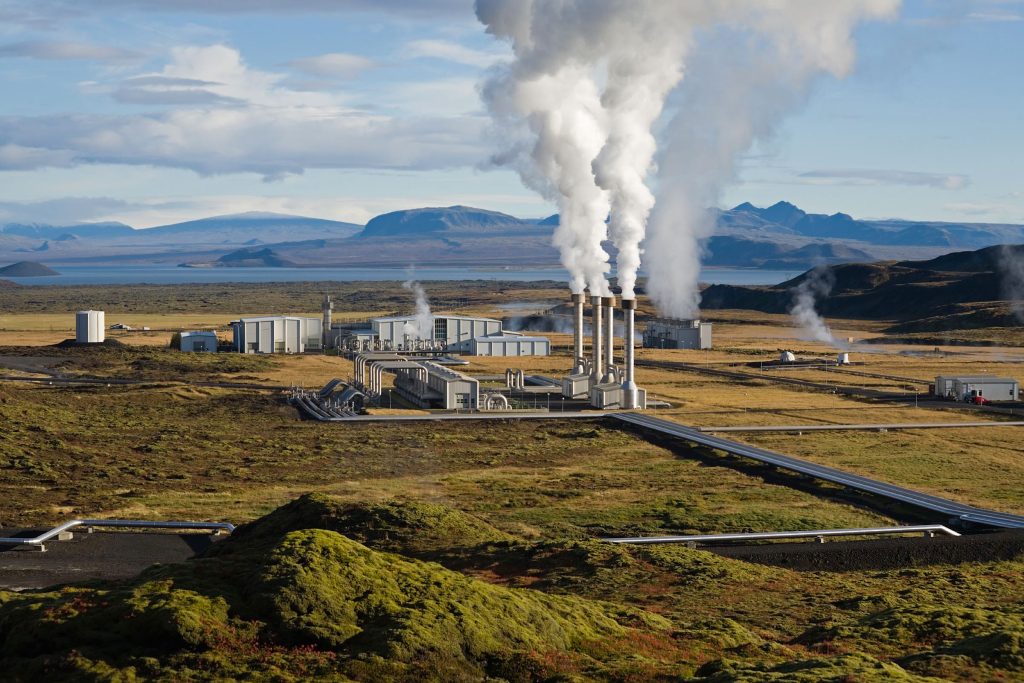
Only the energy stored under the US could generate ten times as much electricity as coal now does. While certain countries, like Iceland, have readily available geothermal resources, these resources depend on location for ease of use, and for drilling to truly be “green”, careful oversight is required.
Biomass
For biomass to really qualify as a source of “green energy,” it must also be carefully managed as a renewable resource. Wood waste, sawdust, and combustible organic agricultural waste are all used in biomass power plants to produce energy. Although these materials emit greenhouse gases when burned, their emissions are still much lower than those of fuels based on petroleum.
Biofuels

These organic resources can be converted into fuels like ethanol and biodiesel rather than burning biomass, as previously noted. By 2050, it is predicted that biofuels will be able to supply more than 25% of the world’s demand for transportation fuel, up from just 2.7% in 2010.
Difference between Green Energy, Clean Energy, and Renewable Energy
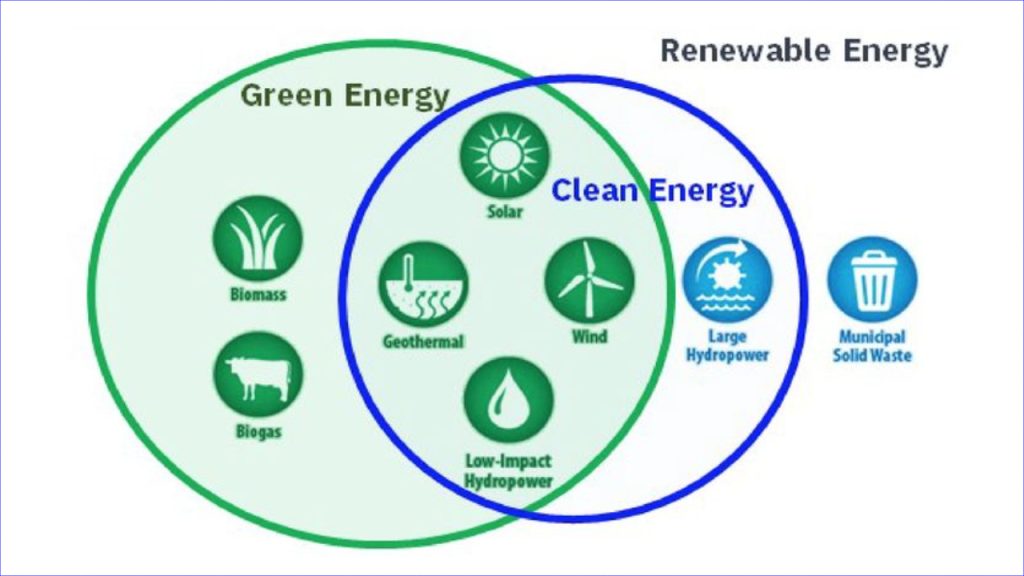
As we mentioned earlier, there is a distinction between green, clean, and renewable energy. This is often confused by people often using these terms interchangeably, but while a resource can be all of these things at once, it may also be renewable but not green or clean (such as with some forms of biomass energy).
Green energy is energy that derives from renewable resources, such as the sun. The term “clean energy” refers to energy sources that do not emit airborne pollutants, whereas the term “renewable energy” refers to energy that is obtained from sources that are constantly renewed, such as hydropower, wind power, or solar energy.
Although there is still some disagreement, renewable energy is frequently considered to be the same thing. Can a hydroelectric dam, for instance, really be referred to as “green” if it alters local waterways and has an adverse effect on the environment?
A renewable, green, and clean source, such as wind energy, originates from a source that is non-polluting, eco-friendly, and self-renewing.
What is green energy investment?
The world is going green, from energy production and recycling to buying organic groceries and supporting sustainable fisheries. Nearly everyone, from climate scientists to corporations, consumers, and politicians, is interested in reducing the strain humans put on the environment.

The variety of options available to investors wishing to add a bit of green to their portfolios may surprise them. Here are a few of the best sectors for green investment.
Understanding green investments
Businesses or entities that make green investments look for ways to cut back on hazardous emissions or use resources more sustainably. This can take the form of alternative technologies like solar and wind power or research toward more effective resource utilization.
Eco-friendly investments can improve the environment and yield financial returns. Older technologies like fossil fuels and sectors that produce pollution are likely to face increased prices and regulatory restrictions as the globe adapts to climate change, creating a market opportunity for alternatives. In an effort to generate high returns in the future, many mutual funds and index funds look for these alternative investments.
The following are the major avenues for green investing.
Renewable Energy
In a world where people are worried about climate change, green energy is a trendy topic. There are more and more investment options in power generation that do not rely on burning fossil fuels to produce electricity for our homes or enterprises. Among the most important sources of renewable energy are water, wind, and solar. Investors can choose from a variety of alternative energy ETFs and mutual funds.
Hydroelectricity
For ages, the primary source of renewable energy has been water. The grain mills of the ancient Greeks were powered by water. Currently, huge infrastructure projects like China’s Three Gorges Dam can power between 70 million and 80 million homes. Hydropower is the most economical way to produce electricity, according to the International Renewable Energy Agency (IRENA).
The hydro industry has few pure-play stocks. There are three energy companies, nevertheless, whose portfolios contain sizable amounts of hydropower. One of the biggest hydro operations is owned by PG&E (PCG). Idacorp (IDA) has 17 hydro projects, and Brookfield Renewable Partners (BEP) operates 227 plants on 87 river systems.
Wind Energy
One of the renewable energy sources with the highest growth is wind power, which has grown by 75 times in the last 20 years. China is the leading country with 288.3 gigawatts of installed capacity, followed by the US (122.3 gigawatts), Germany (62.9 gigawatts), and Japan (70.3 gigawatts).
If this renewable energy source appeals to you, seek out wind farms that offer wind-generated electricity for sale or think about companies that manufacture wind turbines. Again, there aren’t many pure-play stocks, but some noteworthy wind stocks are as follows:
- General Electric (GE)
- NextEra Energy Partners (NEP)
- Siemens Gamesa Renewable Energy (GCTAY)
- Vestas Wind Systems (VWDRY)
Solar energy
Solar energy is being used in homes, buildings, and a variety of other items. If you think that this market is just getting started, pay close attention to the companies making solar panels that will benefit as more people and businesses adopt solar power. First Solar (FSLR) is the largest manufacturer of solar modules and systems.
Solar energy is more than just panels. A wide range of companies offer investment opportunities, from components to installation, including:
- Energy Enphase (ENPH)
- The Invesco Solar ETF
- Sunrun (RUN) (TAN)
Geothermal Energy
Geothermal energy uses clean energy by using heat from the earth. Ormat Technologies (ORA) owns and operates geothermal plants in the U.S., Guatemala, Honduras, Indonesia, Guadeloupe, and Kenya.
Pollution Controls
The pollution control sector is expanding, with goals ranging from lowering greenhouse emissions from industrial power plants to reducing emissions from your car’s tailpipe. This industry comes into action whenever the law calls for an improvement in the amount of hazardous chemicals that can be released into the environment. The following businesses and ETFs specialize in pollution control technologies:
- VanEck Vectors Environmental Services ETF (EVX)
- Invesco MSCI Sustainable Future ETF (ERTH)
- Fuel-Tech (FTEK)
Green Transportation
Tesla (TSLA) is the first name on many people’s lists when it comes to transportation. Although this company has been in the headlines due to its charismatic leader and innovative technologies, it is not the only player in the field.
On a smaller scale, scientists are developing a different way to power cars using fuel-cell technology. Millions of cars—as well as millions of consumers—are waiting for this technology to work.
Below are the companies that operate in this sector:
Ballard Power Systems (BLDP) manufactures cells that can be used in vehicles and backup power systems.
FuelCell Energy (FCEL) focuses on offering electricity alternatives to commercial and industrial enterprises.
Waste Reduction
Recycling is now considered a best practice. The majority of people are aware that materials like paper, metal, and glass may be recycled and used again, but the list of recyclables is expanding. Batteries, waste oil, vegetable oil, cell phones, computers, and even auto parts can all be recycled. There is a company operating in the background that recycles these products.
Companies like Republic Services (RSG) and Waste Management (WM), which have a significant number of recycling facilities, may be of interest to you in terms of your portfolio.
Alternative Farming
In addition to the environmental effects of agricultural pesticides and fertilizers, farming and livestock are the major contributors to carbon dioxide emissions. There are numerous strategies to lessen agriculture’s environmental impact.
Organic agriculture
Organic farms avoid the use of pesticides, adopt sustainable agricultural methods, and sell goods that are healthier to consume. Also, they employ animal management techniques that forgo the use of hormones and antibiotics, preventing harmful chemicals from contaminating the nearby groundwater and bodies of water as well as entering the food chain. United Natural Foods (UNFI), a wholesale distributor of healthy food options, is one of the largest organic food businesses.
Aquaculture
Another food-related business potential that is receiving attention is sustainable fishing, as overfishing in the oceans has an effect on the human food chain. The Norwegian company Mowi ASA (MNHVF), which has international activities, is a promising contender in this market.
Investing in Water
Water is one of our most valuable natural resources. There is a great deal of concern that climate change may cause the world to run out of freshwater. Before quick conservation measures helped to refill supplies in 2018, Cape Town, South Africa, was just a few months away from running out of water.
According to the European Environment Agency, about 20 European nations rely on other nations for more than 10% of their water resources. More than 75% of the water used in five of these nations—the Netherlands, Hungary, Moldova, Romania, and Luxembourg—comes from rivers that flow in neighboring countries.
Cities across the United States, from Los Angeles to Miami, are worried about a lack of water as a result of climate change’s negative effects on water resources.
Companies that collect, clean, and distribute water may be included in a portfolio of investments in the water sector. American Water (AWK), which provides drinking water to 14 million people, is the largest water utility corporation in the US. Essential Utilities (WTRG) provides water supplies to around 3 million people.
Mutual funds offer different ways to invest if choosing individual stocks is too difficult. The Virtus Allianz GIobal Water Fund and the Calvert Global Water Fund take advantage of opportunities related to water all across the world.
Exchange-traded fund offerings include:
- Invesco Water Resources Portfolio ETF (PHO)
- Invesco Global Water Portfolio ETF (PIO)
- First Trust Water ETF (FIW)
- iShares U.S Utilities Index ETF (IDU)
- Zacks Global Water Index
- Invesco S&P Global Water Index ETF (CGW)
Final thoughts
Several green funds focus on a diverse group of businesses with excellent ESG or sustainability credentials. Others concentrate on particular segments of the green economy, such as renewables. Any of these funds can serve as a good place to start when looking for green investments. Read the prospectus and fund criteria when searching for green funds to make sure the fund’s principles coincide with your own.
There are several methods to incorporate a green investment into your portfolio if it gets your attention. You can enter the region without picking a specific company. Environment-focused mutual funds, exchange-traded funds, stocks, bonds, and even money market products are all available.
Follow and Connect with us: Twitter, Facebook, Linkedin, Instagram







